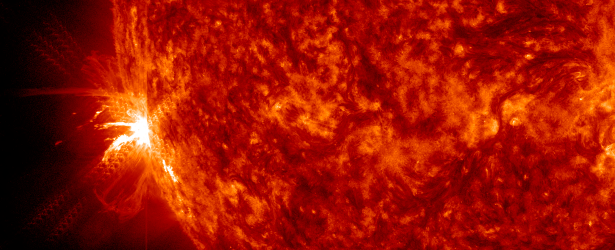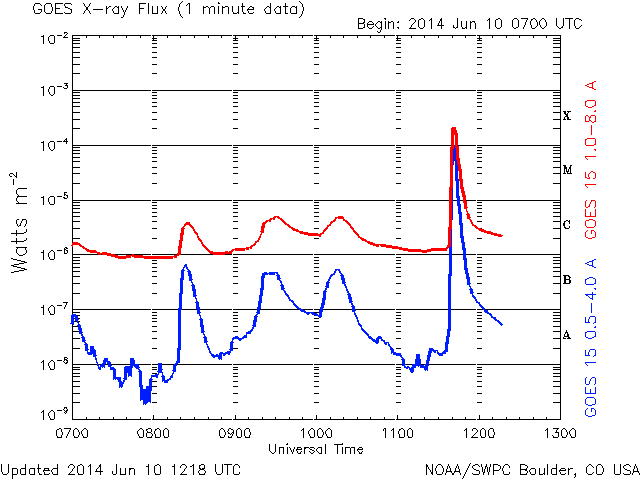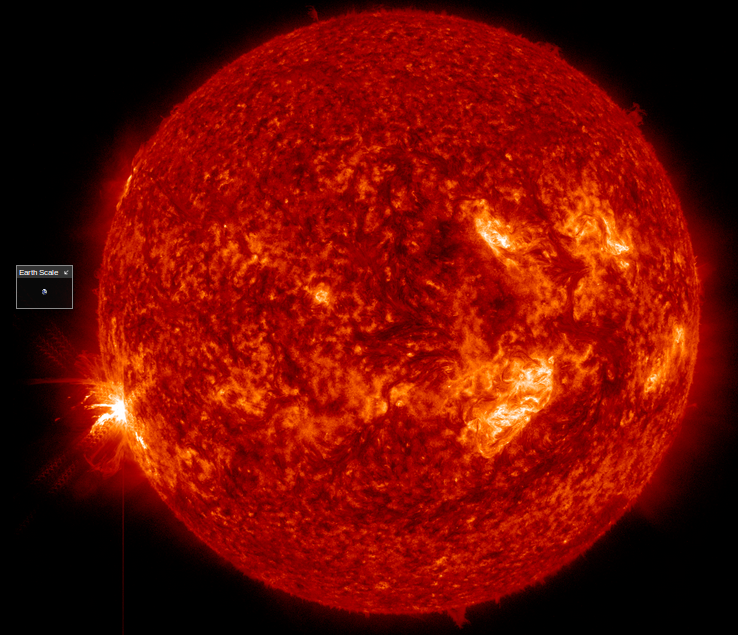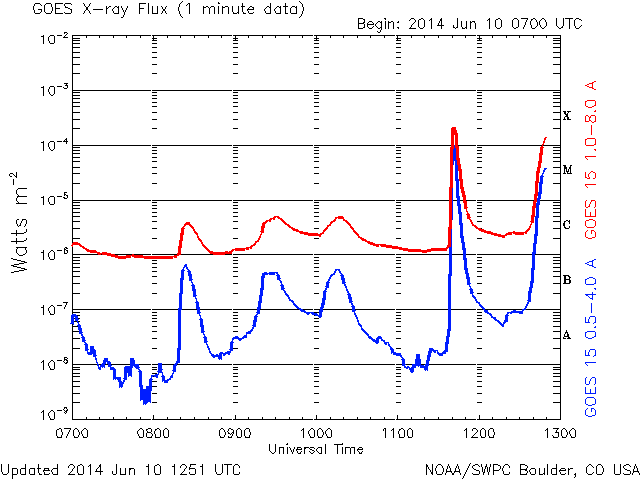Major solar flare reaching X2.2 erupted from southeastern limb

An impulsive solar flare reaching X2.2 at its peak time erupted on June 10, 2014, generating R3 (Strong) radio blackout. The event started at 11:36, peaked at 11:42 and ended at 11:44 UTC. Source was Active Region 2087 located on the southeastern limb.
A large Coronal Mass Ejection (CME) is not expected and it should not be Earth directed. Potential Impacts: area of impact consists of large portions of the sunlit side of Earth, strongest at the sub-solar point. Radio – Wide area blackout of HF (high frequency) radio communication for about an hour.
A 10cm Radio Burst lasting 3 minutes, with peak flux of 1400 sfu, was associated with the event. A 10cm radio burst indicates that the electromagnetic burst associated with a solar flare at the 10cm wavelength was double or greater than the initial 10cm radio background. This can be indicative of significant radio noise in association with a solar flare. This noise is generally short-lived but can cause interference for sensitive receivers including radar, GPS, and satellite communications.

Space Weather Message Code: SUMX01
Serial Number: 100
Issue Time: 2014 Jun 10 1208 UTC
SUMMARY: X-ray Event exceeded X1
Begin Time: 2014 Jun 10 1136 UTC
Maximum Time: 2014 Jun 10 1142 UTC
End Time: 2014 Jun 10 1144 UTC
X-ray Class: X2.2
Optical Class: sf
Location: S15E80
NOAA Scale: R3 – Strong
Potential Impacts: Area of impact consists of large portions of the sunlit side of Earth, strongest at the sub-solar point.
Radio – Wide area blackout of HF (high frequency) radio communication for about an hour.
***
Space Weather Message Code: SUM10R
Serial Number: 619
Issue Time: 2014 Jun 10 1226 UTC
SUMMARY: 10cm Radio Burst
Begin Time: 2014 Jun 10 1139 UTC
Maximum Time: 2014 Jun 10 1140 UTC
End Time: 2014 Jun 10 1142 UTC
Duration: 3 minutes
Peak Flux: 1400 sfu
Latest Penticton Noon Flux: 161 sfu
Description: A 10cm radio burst indicates that the electromagnetic burst associated with a solar flare at the 10cm wavelength was double or greater than the initial 10cm radio background. This can be indicative of significant radio noise in association with a solar flare. This noise is generally short-lived but can cause interference for sensitive receivers including radar, GPS, and satellite communications.
***

Image credit: NASA SDO AIA 304 (via Helioviewer)
NOAA SWPC forecasters estimate 45% chance for an M-class, and 15% chance for X-class solar flare in next two days.
Update:
A second major solar flare is currently in progress. The flare reached its peak at 12:52 UTC as X1.5. Read more about it here.

Featured image: NASA SDO AIA 304 @ 11:41 UTC

Commenting rules and guidelines
We value the thoughts and opinions of our readers and welcome healthy discussions on our website. In order to maintain a respectful and positive community, we ask that all commenters follow these rules.